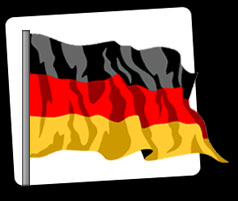Indian art pushes into European marketplace
 Berlin - Viveek Sharma smiles as he points to a figure next to the Hindu elephant god Ganesha.
Berlin - Viveek Sharma smiles as he points to a figure next to the Hindu elephant god Ganesha.
"That's me," said the 41-year-old painter from Mumbai. Sharma is a specialist in painting realistic paintings that look like photographs - and in making himself a feature in the paintings. As a recipient of a scholarship to the Chemnitz artist in residence programme, Sharma currently paints not in his tiny studio in Mumbai, but in a large atelier in Chemnitz's art museum.
His stay in Saxony in Germany is symbolic of a wave of Indian art that is entering the European market. A German trade magazine that covers art recently had a cover story about Indian art and gallery managers have adapted to art from the subcontinent.
"Things that are Indian are cool," said Stefan Wimmer about the current situation in the art market. Wimmer, managing partner of the Dusseldorf gallery Beck and Eggeling, discovered Sharma during a trip to India several years ago. Wimmer has been interested in Indian art for many years.
"Until just a short time ago Indian art was considered similar to African art and placed in the ethno category. Now it's really taking off massively."
The current exhibit Chalo! India at the Essl Museum in Klosterneuburg outside Vienna offers an overview of the trend. Friends of Indian art in Germany also are getting more access to Indian art. Beck and Eggeling will hold an exhibit of Sharma's work in January.
American Peter Nagy, one of the pioneers in the world of art from the subcontinent, opened the gallery Nature Morte 10 years ago in the capital New Delhi. It has a branch in Berlin that opened about a year ago.
Berlin today is one of the centres of contemporary art in Europe, according to Nagy, adding that the artists with whom he works look forward to a chance to exhibit their work in the German capital. Customers from all over Europe visit the gallery to stock up on paintings and sculptures. His current exhibit includes works by Hema Upadhyay and Anita Dube, both Indian artists.
The Indian artist who has achieved the most international success is Subodh Gupta, who's been associated with Nagy since 1997. His works now cost a few hundred thousand euros each. He is known for his sculpture Very Hungry God, an oversized human scull made of aluminium pots and pans, which was displayed in 2007 in Venice in front of the Palazzo Grassi on the Grand Canal.
"Sculptures like this signify disasters that are taking place in the world, especially those in the Middle East," Gupta said recently about his work.
Both Nagy and Wimmer agree that it will be a while before Indian art is ready for mass marketing. The majority of German art consumers will always think of Indian art as ethnic, Nagy said. Wimmer doubts that the conceptual aspects of the artwork will be recognized. And it has to have recognizable Indian roots, he said.
There's still a lot of work to be done in raising awareness about Indian art, Wimmer believes, but eventually people will sit up and notice the sheer number of outstanding artists from India. (dpa)